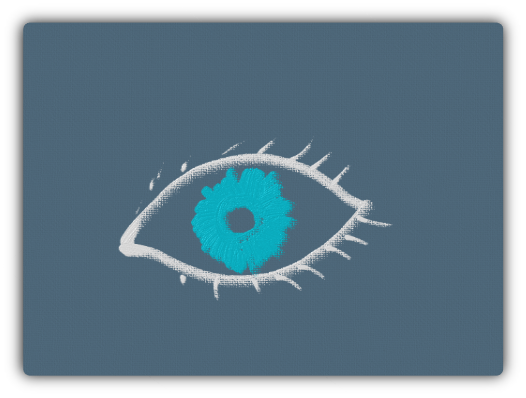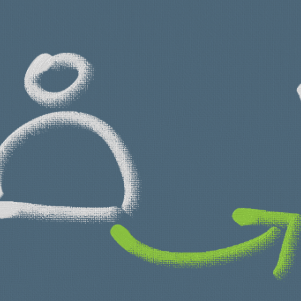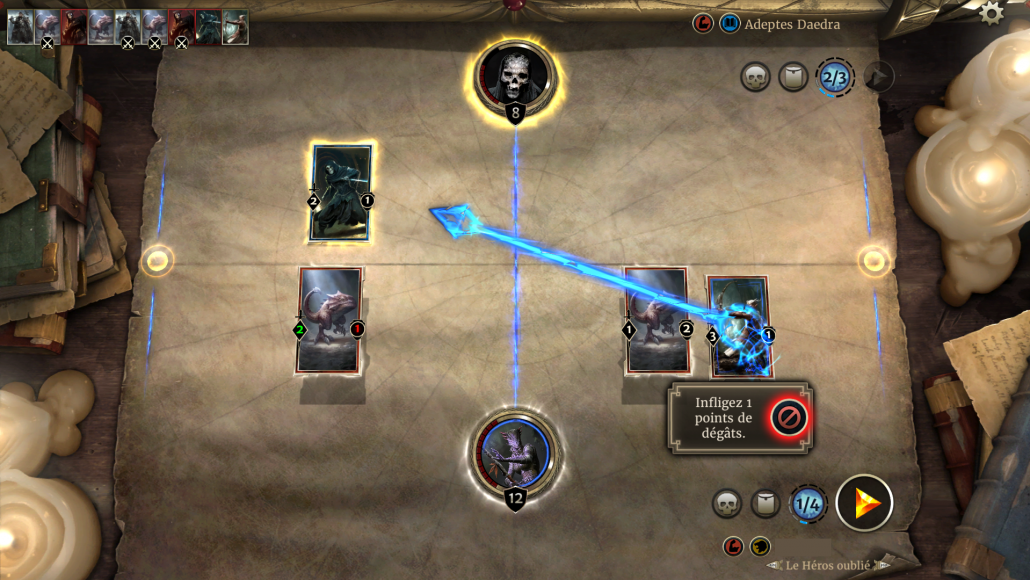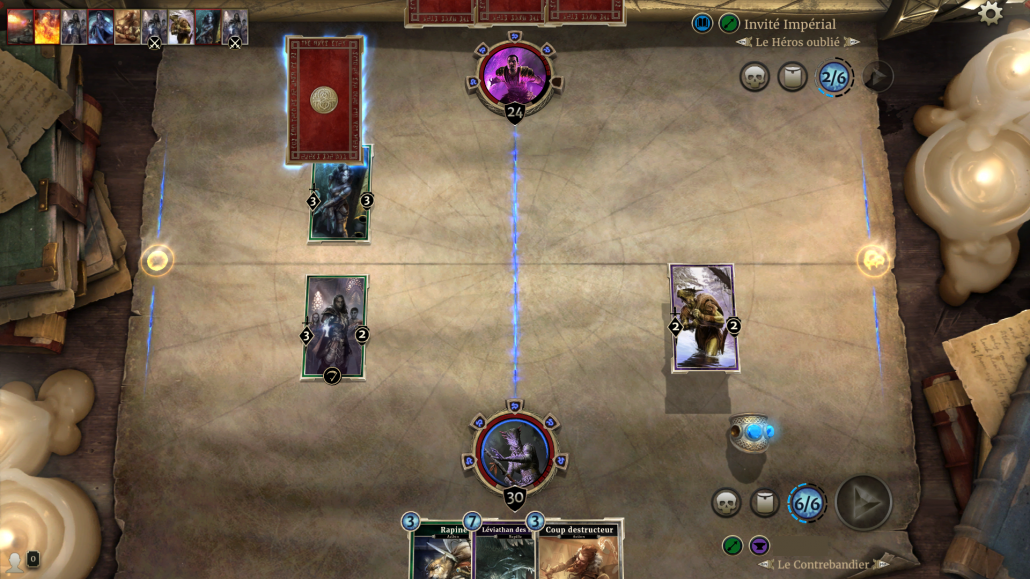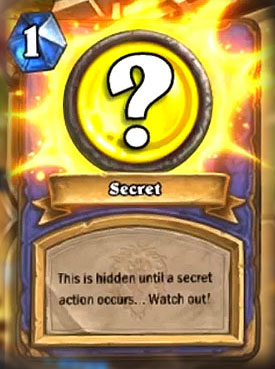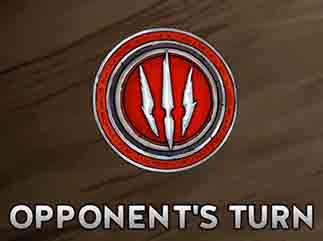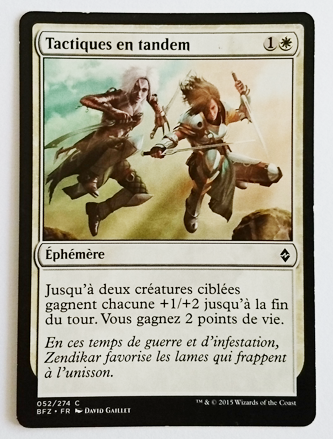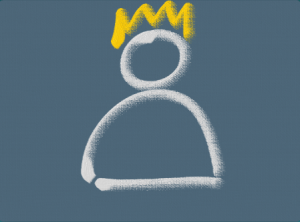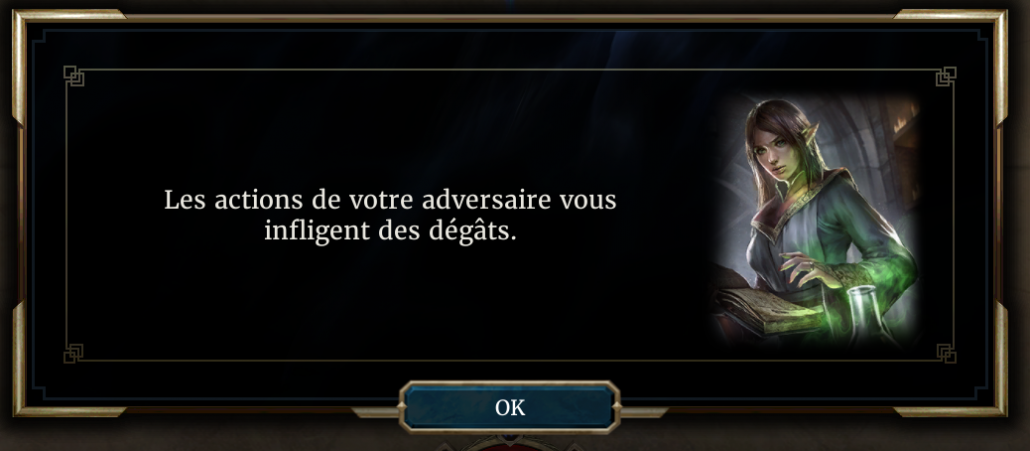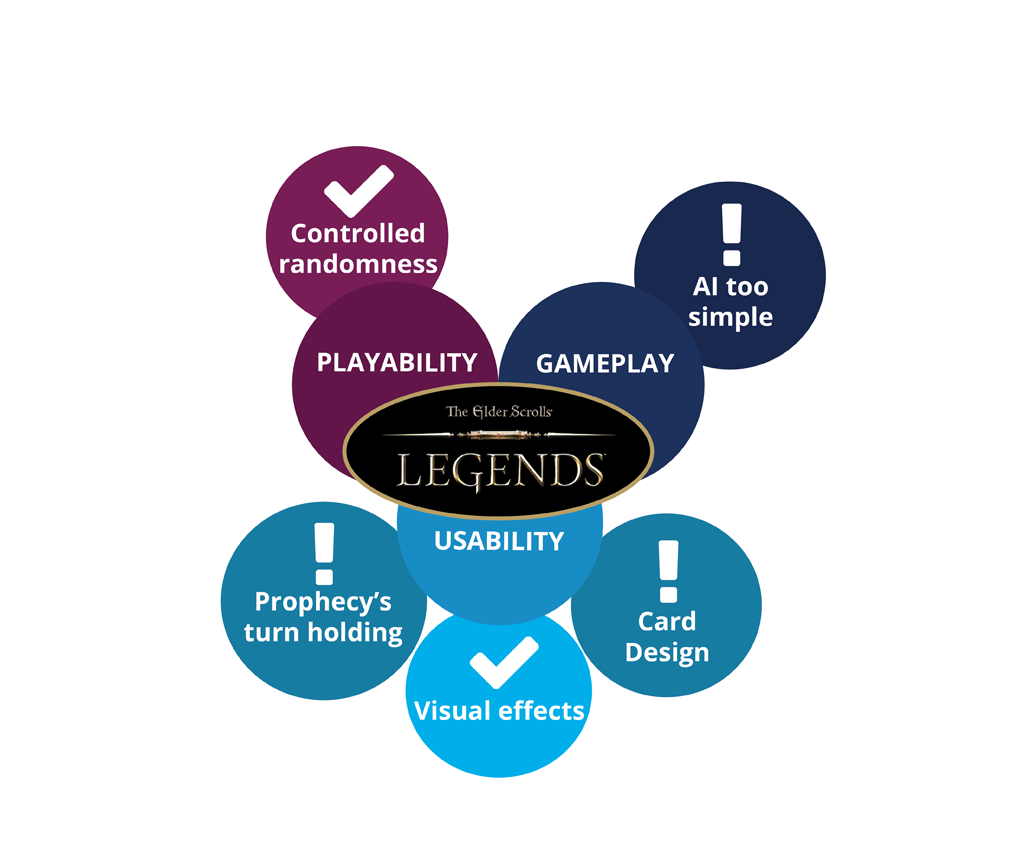Game U.R. – The Elder Scrolls: legends
The Elders Scrolls: Legends is a collectible card video game developed by Dire Wolf Digital. You collect cards with various powers and effects that you have to play against an opponent with his own cards. The goal is to empty all your opponent’s health points.
This is a collectible card video game much like Hearthstone or Gwent and with similar mechanics to Magic: The Gathering(A physical collectible card game.). In these games, knowing what can be done at any time is essential. Let’s see what The Elder Scrolls: Legends do in this direction.
The Elders Scrolls: Legends is available since March 2017 and we reviewed it the last week of March 2017 on PC.
We also compared the interesting points found in The Elders Scrolls: Legends with other games of this genre (Hearthstone, Gwent and Magic: The Gathering). This short benchmark show how some thing are done differently for better or for worse.
Usability
|
|
Information perception
|
 Good Point Good Point |
During our turn, we know what we can and cannot do, every interactive bit is animated and has its own special visual effect. The effects are simple and clear, the cards glow when they can be played, the creatures hover when they can attack, the “end turn” button changes color when there is still something to do, etc. The majority of the cards descriptions is simple (with a few exceptions) and uses keywords to explain the effects. When the opponent is playing, an emphasis is applied on his actions and a history allows to see the last actions for more clarity. |
 Warning Warning |
One problem remains is that there are multiple types of cards (creature, action, objects, supports) and the only differentiation available to the player is a tiny text below the name of the card (the creatures have statistics but objects and actions are pretty similar). There is also some cards with a “wall of text” that could be hard to read but the history on the side allow to read them after they were played. |
 Advice |
In digital card games the “cards” don’t have to look exactly like physical cards that had to be printed all with the same patterns. Each type of cards could have a specific form or art style to help the player to understand which is what |
|
|
Sensation of control |
 Warning Warning |
When a player gets 5 damages, he draws a card, some cards that have a “prophecy” effect can be played right away if they are drawn this way. The damaged player still has to use the card (choose a target, drop the creature, etc) and this mostly happens during his opponent’s turn. We assume this is a design choice to engage players even during their opponent’s turn but it can also be a problem: “My opponent’s turn is already boring, don’t add a tiny opponent turn during my turn” It can be very disruptive for the attacker because he has to wait for the player to react so he can resume his turn, and even for the damaged player it can be annoying to switch his mindset from “spectating the other playing” to “react to an effect”. |
 Advice Advice |
A solution could be to make the “prophecy” effects automatic, for example, a spell triggered by “prophecy” would just be used automatically and the player could continue his turn. This asks for a deep change in the mechanics and effects of the cards but could solve the issue while keeping a reaction from the opponent during a turn. |
Playability
|
|
Agency
|
 Good Good |
The game features very few cards with double-edged randomness, and in the 399 cards actually in the game, only 42 (10.5%) have a random effect (more about the types of randomness in card games here ) This means that the randomness comes mostly from the card draws, therefore, we can often feel like the origin of a victory. At the end of a game, we can often say that the winner deserved it because of his line of play and not because of the spin of a wheel, thus reflecting on it encourages us to adapt our strategy for later. |
 Advice Advice |
Randomness is part of card games at least from the draw, but too much can lead to not feeling like playing the game but just looking at something with no control over it. In video-games, randomness can be a fun mechanic but needs to be refined not to feel too frustrating and to have a fair outcome. |
What about the other games? |
||
|
20.3% 239/1179 cards with random effects |
12.2% 34/279 cards with random effects |
0.9% 147/16505 cards with “random” or “coin flip” in their effect |
|
Hearthstone This game is famous for its unfair randomness and games won with the equivalent of the toss of a coin. Despite this, it seems to keep a balance between strategic randomness for competition and full randomness for fun. 🙁 |
Gwent This game seems to present mostly strategic randomness, its effects can be often controlled and anticipated. 🙂 |
Magic: The Gathering This game has very few cards with a random effect, it is mostly because “random” means that players have to create their own randomness by shuffling cards or tossing a real coin and it can be seen as unfair if the opponent “didn’t seem to have shuffled enough” or other human bias. 💡 |
Gameplay
|
|
Fairness |
The game features a “solo arena”, which is a solo deck building experience, for a small fee it opposes the player to an AI (Artificial Intelligence) opponent.
 Warning Warning |
The AI is dumb! Even with interesting decks, an AI opponent will play in a very simple way, ignoring combos or doing obvious bad plays. To increase the solo difficulty, the game gives the AI opponent unfair advantages just to give him a chance. It is easy to think that, when the AI opponent wins, it is because of this advantage. |
 Advice Advice |
When offering a solo experience, the AI is a core feature, even more when it can offer rewards, the player can feel ripped of his victory by the game itself and not his opponent. Even if it is specific for certain decks to allow better strategy handling, a finely tuned AI is a must have. |
What about the other games? |
||
|
Hearthstone An AI opponent is available in the training mode and the adventures. In the adventures, the unfairness of some fights is a clear choice, but the player can retry infinitely without paying more, so the risk is lessened and the unfairness more acceptable. 🙂 |
Gwent This game doesn’t have a solo adventure besides the training mode yet. |
Magic: The Gathering This game is only playable against someone else (with a few marginal exceptions) so AI opponents are not a big problem. |
Conclusion
The Elder Scrolls: Legends is fun to play and the artworks make it also nice to watch. But sometimes it can be seen as a bit clunky compared to the other card games in the market. It remains a good collectible card video game with his ups and downs, free to play and easy to grasp for new players.
This review was but only a peek of our The Elder Scrolls: Legends assessment (It isn’t even its final form !!). We can do a lot more thanks to our tools and expertise, contact us if you want to know more.
If you have questions or opinions, please tell us In the comments. See you next time!
That was GameU.R. the review ergo of jeux vidéo.


